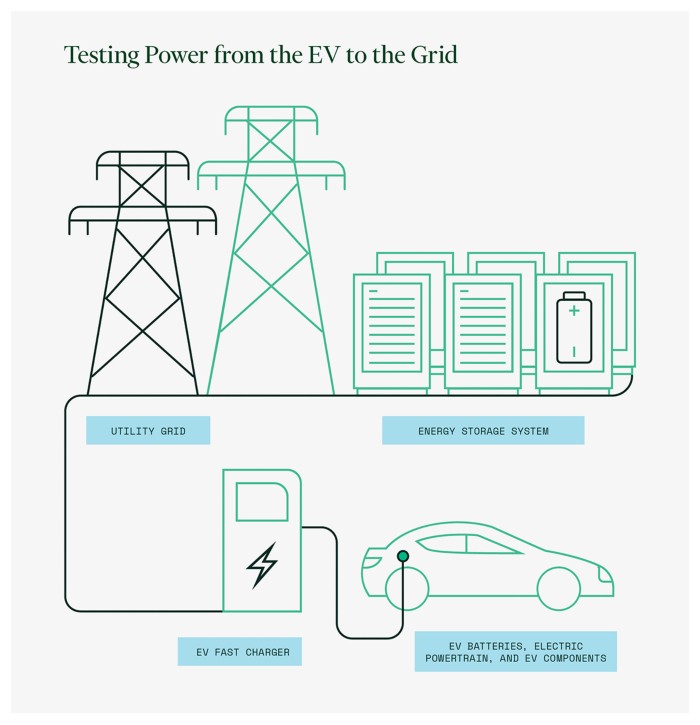The Role of DC and AC Power in EV Testing
Overview
Part of our H2 2023 Automotive Journal
With the accelerated growth of electric vehicles, engineers must address new testing challenges. Higher voltages permit faster charging and increased power transfer while reducing vehicle weight. These factors are driving development for higher performing batteries, electric drivetrains, power converters, and inverters.
DC and AC power test solutions emulate real-world conditions and are critical for the testing and validation of EV components and systems, as well as the charging infrastructure in which they need to coexist. Let’s explore the EV components and systems that need to be tested.
Contents
- Battery Cell, Module, and Pack Testing
- EV Components and Systems Tests
- NI’s DC and AC Test Solutions
- Next Steps
Battery Cell, Module, and Pack Testing
EV battery cells, modules, and packs require rigorous EV lifecycle, drive cycle, and performance testing. Battery test systems need to provide modular and scalable power, flexible configurations, advanced performance hardware, and built-in safety. However, testing batteries is more than just cycling a battery—it involves testing multiple systems that need to communicate with each other. NI’s comprehensive, software-defined approach to testing batteries provides a path forward from offering battery cyclers to a large-scale lab deployment with battery test software.
EV Components and Systems Tests
Electric Powertrain Testing
Testing the electric powertrain requires fast-transient speeds and accuracy to emulate real-world conditions of the battery and wheel power. Unlike other battery simulators or bidirectional power supplies, NI’s battery emulators are specifically designed to emulate a battery’s characteristics to provide real-world performance. Their robust topology provides the capability to emulate real-world conditions over a traditional battery simulator.
NI’s battery emulator sinks and sources power to maintain voltage regulation and accepts back EMF which prevents safety hazards. It has isolated input and output paths to eliminate single points of failure.
DC Fast Charging Testing
DC fast charging is much faster compared to AC charging. The AC power from the grid is converted into DC power in the charging station and supplies power directly to the EV battery. More power can be delivered because it bypasses the limitations of the onboard charger.
Using batteries as power sources for testing fast charger systems is extremely time-consuming and costly. The ability to emulate a wide range of vehicles, regardless of their battery characteristics and power levels, dramatically simplifies testing. NI’s unique battery emulation capability can substantially reduce test time, energy consumption, and operating costs. NI’s grid simulator can emulate the grid, and the DC/battery emulator can emulate the EV. This bidirectional source can also emulate the fast charger or a high-voltage battery that can accept fast charging with layered, built-in safety features.
Learn more about approaches for EV charger testing.
EVSE, OBC, V2G Testing
Testing the EVSE, OBC, or V2G applications requires simulating dynamic waveforms. Further development is taking place to optimize AC home charging and the use of V2G as a form of energy storage capacity to support the utility grid. V2G allows the utility grid to use the EV’s battery during high peaks of energy consumption. NI’s grid simulator can emulate the source, or power from the grid, and NI’s AC load can simulate any inductive, capacitive, resistive load for testing.
NI’s DC and AC Test Solutions
NI has complete DC and AC test solutions to test everything from the battery to the utility grid. In-house battery cyclers, battery emulators, and DC loads can test and emulate the EV battery and DC power, while the AC grid simulators and loads can verify the AC product performance.
With NI’s acquisition of NHR and Kratzer, NI’s AC and DC power electronics portfolio has grown to include the following solutions:
Contact us today to learn more about the right solution for you.
